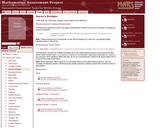
Students will create a design using rotations and reflections.
- Provider:
- MARS, Mathematics Assessment Resource Service
- Author:
- Shell Center for Mathematical Education
- Date Added:
- 06/24/2019

Students will create a design using rotations and reflections.

Susie is organizing the printing of tickets for a show. She has collected prices from several printers. Your task is to use a table and algebra to advise Susie on how to choose the best printer.
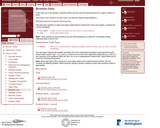
Students must design a cylindrical drink can that uses the least aluminum for a given volume of drink. (This task is very similar to Funsize Cans, but with less step-by-step guidance.)
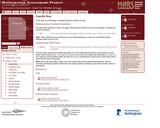
Students will design a hexagonal gift box made from cardstock.

In this lesson, students demonstrate their knowledge of identifying when two quantities vary in direct proportion to each other, distinguishing between direct proportion and other functional relationships, and solving proportionality problems using efficient methods.

This lesson unit allows students to demonstrate their understanding of classifying numbers as rational or irrational and moving between different representations of rational and irrational numbers.

This lesson unit is intended to help you assess how well students are able to model a situation, make sensible, realistic assumptions and estimates, and use assumptions and estimates to create a chain of reasoning in order to solve a problem. Students are asked to determine the hegith of a mattress after a sum of money has been removed and whether or not all of the money will fit in a particular suitcase.

This lesson unit is intended to help you assess how well students are able to:
Work with concepts of congruency and similarity, including identifying corresponding sides and corresponding angles within and between triangles.
Identify and understand the significance of a counter-example.
Prove and evaluate proofs in a geometric context.

This lesson unit allows students to demonstrate their understanding of finding irrational and rational numbers to exemplify general statements and reasoning with properties of rational and irrational numbers.

In this lesson, students demonstrate their understanding of the meaning of the terms Greatest Common Factor and Least Common Multiple.
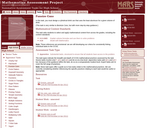
In this task, you must design a cylindrical drink can that uses the least aluminum for a given volume of drink.
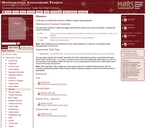
Students will find the volumes of different shaped drinking glasses.

Unit on identifying parts of linear equations

In this lesson, students connect algebraic equations to real-life situations, as well as uncover and address misconceptions concerning the meaning of variables in equations.
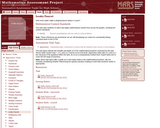
Students must determine how much water might a dripping faucet waste in a year. This task asks students to select and apply mathematical content from across the grades, including the content standards.

Stuents must use math to decide whether a lottery idea will make money.

This lesson assess how well students are able to solve real-life mathematical problems. Students use proportional relationships to solve multistep ratio and percent problems, draw inferences about a population from random sample of data, and make and state assumptions based on real-life situations.

This lesson unit is intended to help you assess how well students are able to:
• Interpret a situation and represent the constraints and variables mathematically.
• Select appropriate mathematical methods to use.
• Explore the effects of systematically varying the constraints.
• Interpret and evaluate generated data and identify the optimum case, checking it for confirmation.
• Communicate their reasoning clearly.

Students will use probability to find a good strategy for winning a memory game.

In this lesson, students demonstrate how well they understand how to represent quantities and analyze the relationship between these variables using tables, graphs, and equations.